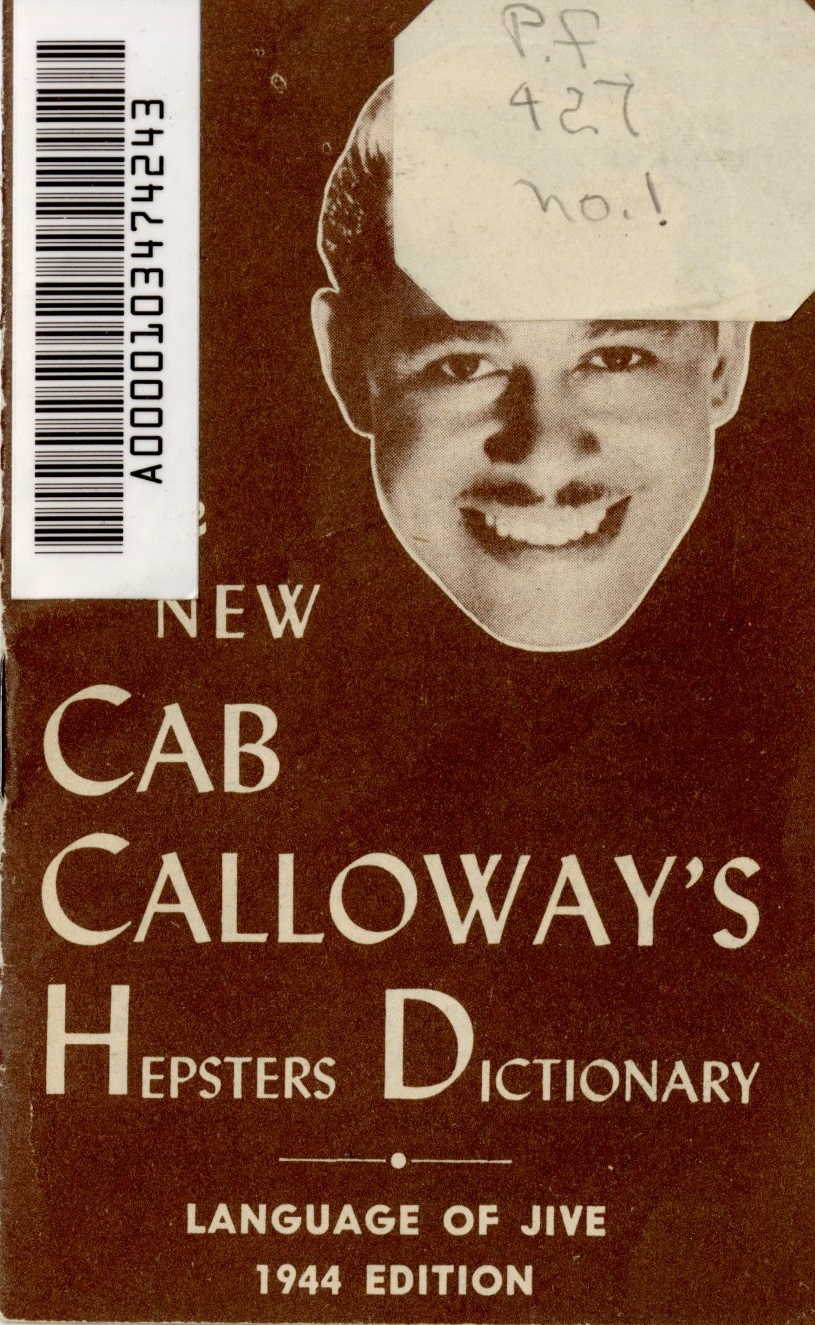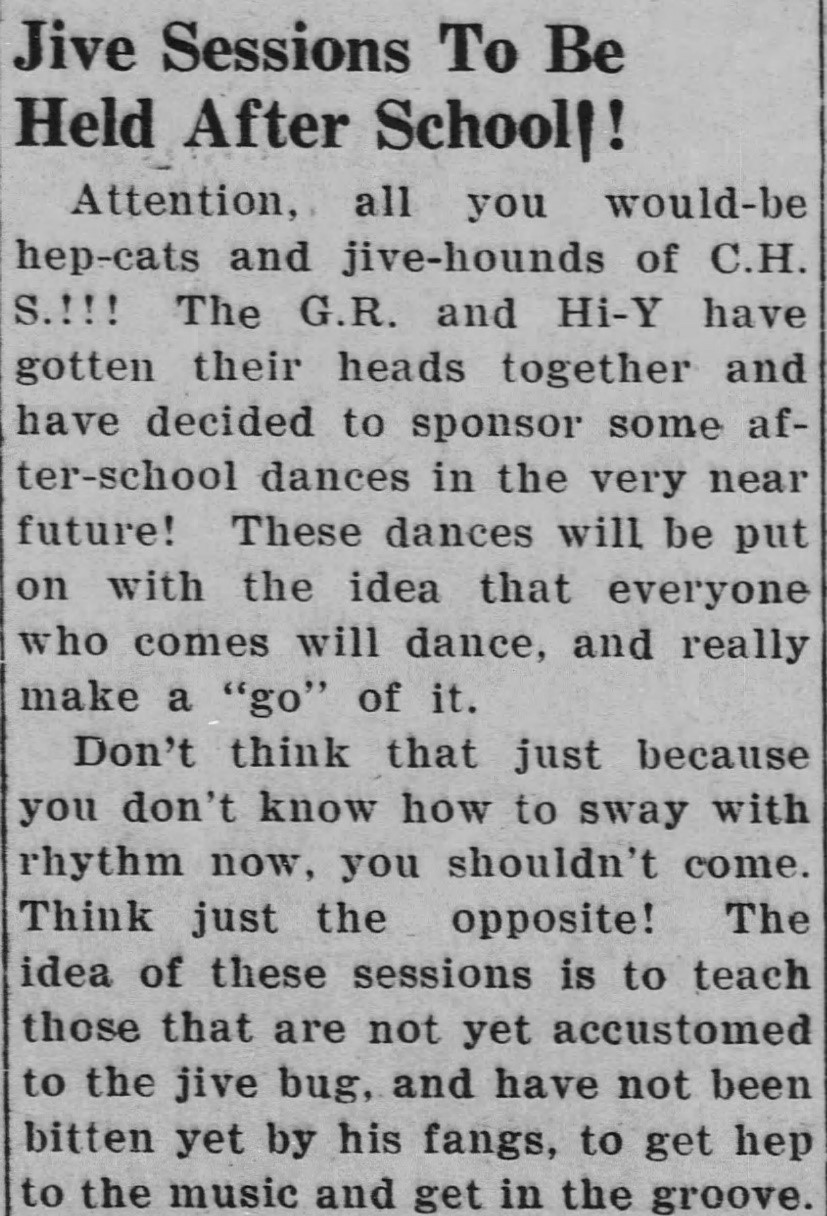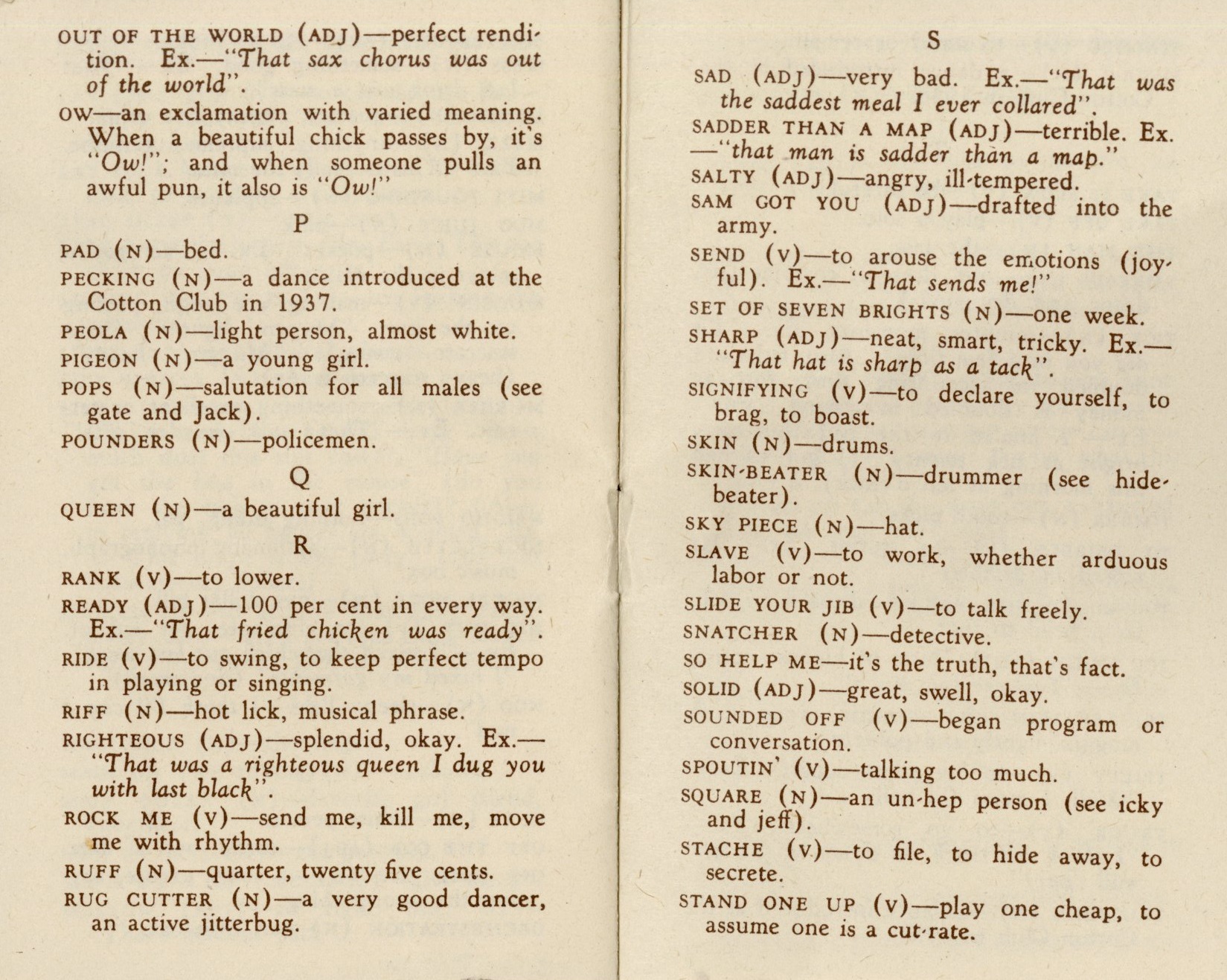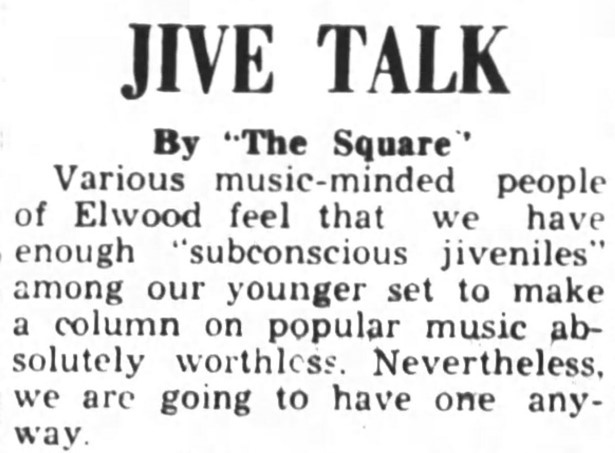Cabell “Cab” Calloway III was indisputably one of the most popular and iconic jazz performers of the 1930s. He possessed a distinct entertaining style which combined catchy swing music with cheeky vaudevillian skits. He sang, he danced, he sported exaggerated “zoot suits” and he helped popularize jive talk, a particular form of African American Vernacular English that is believed to have started in the jazz clubs of Harlem – where Calloway got his start – and was prevalent throughout the country in the 1930s and 1940s.
Calloway was the unofficial Ambassador of Jive. In 1938, he self-published a small booklet entitled “Cab Calloway’s Cat-ologue: a “Hepster’s” Dictionary.” Several revisions followed, all published by Calloway himself. The Indiana State Library has the 1944 edition, which was titled “The New Cab Calloway’s Hepsters Dictionary.” In the dictionary’s foreword, Calloway proudly proclaims it to be “the official jive language reference book of the New York Public Library.” It is considered by some to be the first dictionary written and published by an African American.

Cover of the Indiana State Library’s Hepsters Dictionary ([p.f.] ISLM 427 no. 1). Unfortunately, some “square” (un-hep) librarian in the past was a little overly enthusiastic with the labelling and barcoding of this item!
By the 1940s, jive was prevalent in American popular culture and was particularly popular among white teenagers and young adults. Expressions such as “blow the top” (to be overcome with emotion), “gimme some skin” (shake hands) and “salty” (angry, ill-tempered) became commonplace and are still used to this day.

An article describing a “jive” dance program held at Culver High School. From The Culver Citizen, Feb. 3, 1943.
Jive expressions became so mainstream that a youngster in 1940s Indiana could go to the L.S. Ayres department store and be “togged to the bricks” (dressed to kill) in a pair of blue jeans featuring jive talk.
The jive fad was not isolated only to large cities. Even folks in smaller places did not want to come across as “corny” (old fashioned, stale) or “icky” (one who is not hip, a stupid person, can’t collar the jive).
Cab Calloway continued to keep “joints jumping” (club is leaping with fun) for delighted “jitter bugs” (swing fans) for decades after his heyday in the 1930s. He experienced a resurgence of interest in his career after making a cameo appearance in the 1980 film “Blues Brothers,” where he performed his most famous song, “Minnie the Moocher.” Calloway died in 1994 at age 86. He was truly one of the “hepest cats” in American history.
This blog post was written by Jocelyn Lewis, Catalog Division supervisor, Indiana State Library. For more information, contact the Indiana State Library at 317-232-3678 or “Ask-A-Librarian.”





